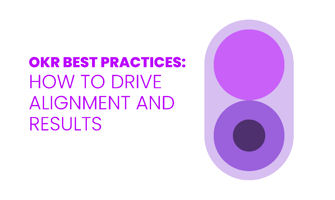Sales performance analytics helps businesses track, measure, and improve sales strategies. By...
The Comprehensive Guide to Sales Enablement in Revenue Operations
Revenue Operations (RevOps) is a strategy that combines sales, marketing, and customer success teams to streamline processes and drive revenue growth.
It focuses on aligning these departments to work together efficiently and effectively.
The goal is to improve the overall customer experience and increase revenue by breaking down silos and fostering collaboration.
Defining Sales Enablement within Revenue Operations
The role of Sales Enablement in enhancing efficiency and productivity
Sales Enablement helps sales teams sell products effectively by providing tools, training, and resources. This includes content, training materials, and sales readiness index.
It aligns teams through Global Revenue Operations, fostering collaboration and driving revenue. Strategies like sales coaching and partner enablement enhance communication and efficiency between departments.
Operations Enablement uses innovative tools like machine learning and analytics to improve global revenue. This results in personalized customer experiences and a streamlined sales process, increasing conversion rates.
Statistics illustrating the impact on customer conversion
 Statistics can show how sales enablement impacts customer conversion rates. This is done by analyzing key metrics like sales forecasting, analytics, and revenue generation. These metrics give insights into how revenue operations enablement strategies boost revenue and improve customer satisfaction.
Statistics can show how sales enablement impacts customer conversion rates. This is done by analyzing key metrics like sales forecasting, analytics, and revenue generation. These metrics give insights into how revenue operations enablement strategies boost revenue and improve customer satisfaction.
By using machine learning algorithms and data analytics, businesses can measure the effectiveness of sales enablement. This helps them pinpoint areas for improvement in sales processes and customer interactions.
The link between sales enablement strategies and better customer conversion rates can be visualized through dashboards and reporting tools. These tools track sales productivity, customer engagement, and revenue growth.
Implementing sales coaching, training, and readiness practices further improves the effectiveness of revenue operations enablement. This helps drive customer conversions and revenue generation.
Using technology like digital sales rooms and content management systems enhances the customer experience. This results in a smoother and representative-free interaction for customers throughout the sales process.
Key Components of Revenue Operations Enablement
Infrastructure: Building a Robust Support System
Businesses can boost their Revenue Operations by implementing specific strategies. These include optimizing sales content, improving sales coaching, and leveraging machine learning for revenue generation.
Training and development play a crucial role in fostering communication and collaboration within Revenue Operations.
Utilizing technologies like content management systems and digital sales rooms can streamline processes and provide valuable insights for decision-making in Revenue Operations.
Focusing on strategies that enhance communication, collaboration, and technical support helps build a solid foundation for revenue growth and success.
People: Training and Development for Enhanced Communication and Collaboration
Training and development initiatives are important for improving communication and collaboration skills in a team that supports Revenue Operations. Sales teams benefit from dedicated sales programs like training, coaching, and onboarding. These programs help individuals communicate better with customers and work effectively with their team.
Strategies like sales readiness assessments, certification programs, and ongoing coaching sessions ensure that team members receive the necessary training to enhance communication and collaboration within Revenue Operations. Organizations can measure the effectiveness of these programs through metrics such as sales forecasting accuracy, customer stories shared, and feedback from sales reps on how training impacts their interactions with customers.
Analytics and dashboards from technology platforms like HubSpot offer insights into the progress and success of training programs focused on communication and collaboration within Revenue Operations.
Business Processes: Streamlining for Better Decision Making
Streamlining business processes within Revenue Operations involves aligning sales, marketing, and customer strategies to optimize revenue generation.
Implementing RevOps strategies like improving reporting and analytics can enhance efficiency and productivity. This alignment allows sales teams to have a clearer view of the customer journey, leading to better decision-making.
Utilizing analytics and machine learning in sales forecasting and reporting can provide valuable insights for sales teams to make informed decisions.
Implementing tools like dashboards and content management systems can streamline processes, enabling sales reps to access customer stories and sales content easily.
This streamlined approach also supports effective sales coaching and training, ultimately improving revenue productivity and creating a rep-free experience for customers.
Leveraging enablement technology like HubSpot and digital sales rooms can further enhance revenue operations and overall decision-making processes.
Aligning Teams through Global Revenue Operations
Strategies for Universal Alignment Across Departments
Improving communication among departments in revenue operations can be achieved by implementing strategies that enhance collaboration and efficiency.
By streamlining business processes, decision-making can be greatly improved.
For example, implementing a global revenue operations enablement strategy focuses on aligning sales teams, marketing, and customer service. This alignment drives revenue generation.
Utilizing revenue operations enablement technology, such as HubSpot, can streamline processes, provide analytics for informed decision-making, and enhance collaboration.
Machine learning and analytics tools can automate tasks, provide real-time insights, and optimize revenue productivity.
Implementing dashboards for reporting and tracking key metrics can ensure a rep-free experience. This allows sales teams to focus on customer stories and account strategy.
Practices like sales coaching, sales readiness index, and sales certification can enhance sales training and onboarding, leading to more effective sales kickoffs and partner enablement.
Improving Interdepartmental Communication for Efficiency
Improving communication in revenue operations between departments can be simple:
-
Optimize processes.
-
Use technology for data-driven decisions.
-
Encourage teamwork among different departments like sales, marketing, and customer service.
When teams communicate better, it improves decision-making and productivity. Training programs play a big role too, as they equip sales teams with the right skills to talk to other departments.
Using tools such as dashboards and analytics helps teams get real-time info for better decisions. This boosts productivity and gives customers a smooth experience without relying on sales reps.
Optimizing the Customer Experience in RevOps
Customer Journey Mapping for Better Sales Enablement Strategies
Customer journey mapping is a useful tool for sales teams. It helps identify opportunities for better sales strategies. Understanding the different touchpoints a customer interacts with during the buying process is key. Sales reps can then customize their content to meet customer needs at each stage.
Revenue operations rely on data for optimizing customer experience. Data-driven insights aid in making informed decisions on sales forecasting and revenue generation. Clear communication among teams is vital for successful revenue operations. Effective communication ensures a seamless process from sales training to partner enablement.
Businesses can enhance revenue productivity by using technology like digital sales rooms and dashboards. This creates a streamlined and efficient experience for customers.
Leveraging Data for Targeted Customer Engagement
Effective use of customer data is important in Revenue Operations. Businesses can use strategies like machine learning and analytics to understand customer behavior. Analyzing data from different touchpoints in the customer journey helps sales teams create personalized engagement. Content management systems and dashboards also help in understanding customer preferences and improving sales readiness.
Focusing on account strategy and sales coaching based on data-driven insights allows sales reps to personalize their approach. Integrating technology into sales training ensures a seamless experience for customers. A data-driven approach is crucial for increasing revenue and customer satisfaction in Revenue Operations.
Technological Advancements in Operations Enablement
Innovative Tools that Support Global Revenue and Customer Conversion
Innovative tools can help businesses increase revenue and customer conversion. These tools include:
-
Advanced analytics
-
Machine learning-powered platforms
-
Interactive sales content management systems
Sales teams can use these tools to:
-
Gain valuable insights into customer behavior
-
Improve sales forecasting accuracy
-
Enhance the overall customer experience
Effective implementation involves:
-
Integrating the tools into existing processes
-
Providing necessary training and resources to sales teams
-
Using data-driven dashboards to track progress and measure success
By using these tools, businesses can:
-
Increase revenue generation
-
Streamline operations
-
Create a more personalized and interactive customer experience globally
Establishment of Communication Channels in Revenue Operations
Effective communication channels for facilitating collaboration in revenue operations:
-
Use Customer Relationship Management (CRM) systems
-
Utilize Marketing Automation Platforms (MAPs)
-
Employ Sales Engagement Platforms
By integrating these tools, teams can:
-
Easily share information
-
Track progress
-
Ensure a cohesive approach to revenue generation
Implementing dashboards and reporting mechanisms can:
-
Provide real-time insights into customer interactions
-
Assist in sales forecasting
-
Enhance revenue productivity
Strategies to enhance communication and collaboration within revenue operations teams include:
-
Creating a centralized hub for sales content, training resources, and customer stories
-
Ensuring access to updated information for sales reps, marketing teams, and customer-facing staff
-
Aligning efforts towards achieving revenue goals
Implementing practices such as sales coaching, sales training, and sales certification:
-
Foster a culture of continuous learning and improvement
-
Lead to increased revenue generation and customer satisfaction
Developing Training Curriculum for Effective Revenue Operations Enablement
Businesses can develop an effective revenue operations training curriculum by focusing on strategies that enhance sales enablement, revenue generation, and customer satisfaction.
This can be achieved by implementing sales training and certification programs, readiness assessments, and enablement sessions for sales teams.
Integration of sales coaching, account strategy workshops, and partner enablement sessions can improve collaboration and communication within revenue operations teams.
Utilizing enablement technology like digital sales rooms, dashboards, and content management systems can streamline processes for a more efficient experience.
Staying informed about machine learning and analytics tools is also important to address technological advancements in revenue operations, leading to improved productivity and sales forecasting accuracy.
This comprehensive approach ensures businesses are prepared to navigate the constantly changing landscape of revenue operations.
FAQ
What is sales enablement?
Sales enablement is the process of providing sales teams with the resources, tools, and information they need to sell more effectively. This can include training programs, CRM systems, playbooks, and content libraries.
How does sales enablement impact revenue operations?
Sales enablement impacts revenue operations by providing tools, training, and resources that empower sales teams to sell more effectively and efficiently. This includes improving lead conversion rates, increasing deal sizes, and shortening sales cycles.
What are the key components of a comprehensive sales enablement strategy?
Key components of a comprehensive sales enablement strategy include training, content, technology, and collaboration. Training ensures reps are equipped with necessary skills, content provides valuable resources, technology aids in efficiency, and collaboration fosters team success.
How can companies measure the success of their sales enablement programs?
Companies can measure the success of their sales enablement programs by tracking key performance indicators (KPIs) such as conversion rates, sales cycle length, and revenue growth. Surveying sales teams for feedback on program effectiveness and analyzing sales data before and after implementation are also valuable methods.
What are some common challenges companies face when implementing sales enablement in revenue operations?
Some common challenges companies face when implementing sales enablement in revenue operations include lack of alignment between sales and marketing teams, issues with data integrity and integration, and difficulty in measuring the effectiveness of sales enablement initiatives.




